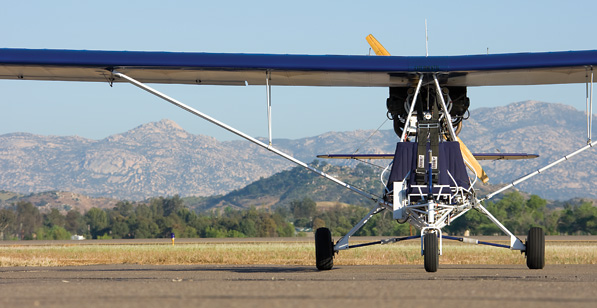
The first thing that might occur to you to ask Matt Hlavac, or any Breezy builder for that matter, is: Why? In this particular case, why spend 3000 hours over four years and $16,000 building an aircraft that is basically a flying sled? The answer is simple. Its fun. And tracing Hlavacs aviation history back to its roots, it is likely thats what flying has always been about for him. In building the Breezy, he has taken a modest plansbuilt design and made it uniquely his own.
The Breezy (officially named the Breezy R.L.U.-1, after its designers last names) is the brainchild of Charles Roloff, Bob Liposky and Carl Unger. First introduced in 1965 at the Experimental Aircraft Association Fly-in at Rockford, Illinois, its open cockpit offered pilots, well, a breezy feeling and a spectacularly unobstructed view. It was designed to accommodate a set of PA-12 wings (or wings from other Pipers such as the PA-14 or -18 or the J-3 or -5), and so no wing drawings are included in the plans, which are still available from Unger, now in his 70s. That original Breezy, powered by a Continental C-90-8 and 10 gallons of fuel, was meant to haul the pilot and two passengers, and it did-often. Its now part of the collection at the EAA Museum.
Born to Build
Plans for the Breezy are pretty sparse, Hlavac said. There’s no DVD or thick manual. You buy lengths of chrome-moly tubing, make every cut, complete every weld. No web sites. You do this project because you want to build. The plans are set up with stations, starting with Station 1 at the nose, and one just works his way through until the last station. It helped that Hlavacs friend and Breezy builder Jack Schifferer, whose first Breezy was also donated to the EAA Museum, gave him his set of plans, because the drawings of todays sets have been photocopied so often that they can be difficult to read.
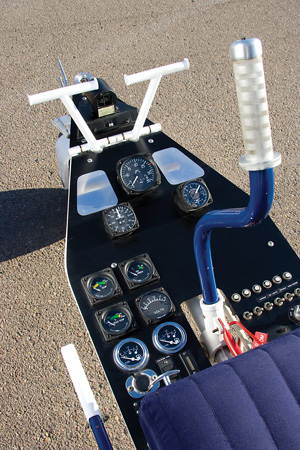
Having done welding before, some on aircraft and some on other projects, Hlavac knew his way around a torch. Where his knowledge was lacking, he researched what he needed through books. This made him aware of areas on the airframe that could be beefed up or streamlined. For example, at any place in the plans that required a directional change in the tubing, thus calling for a cut and a butt weld, he made a smooth bend instead to increase strength. Filling the tubing with sand so that it wouldn’t collapse on itself, he made a pattern and bent the tube using a rosebud (wide flame) tip on an oxyacetylene unit, annealing and normalizing the tube in the process.
Hlavac also wanted his Breezy to have dual sticks and rudder pedals, which was different from the original design. The larger engine he installed deviates from the plans and was needed to drive the electrical system, which the original did without. Hlavac uses a 150-hp Lycoming O-320-E2D powerplant that he says he would not have put on the plansbuilt as it stood, which explains why many of the structures were made stronger. The engine came from a Part 135 schools Cessna 172 that was retired after 2000 hours, Hlavac said. So I have a first-run engine that is overhauled-all of the parts were yellow-tagged and the engine was reassembled per the Lycoming specifications. He fortified the engine tower to support the larger engine (using a dynafocal mount) and upgraded the landing gear. He also added 1 in the horizontal stabilizers static angle of incidence to ease the unstick force that is common in high-thrust-line pusher airplanes. The Lycoming swings a Sensenich 74×48 propeller. In what there is of a cockpit, the mounts for the tachometer, airspeed and altitude gauges are angled toward the pilot (instead of being flush-mounted) for an easier view.
Something Borrowed
As the designers did with that first Breezy, Hlavac borrowed parts from other aircraft, and some of the decisions about what to modify were dictated by the parts he chose to use. For instance, the casting that connects the control stick to the aileron and elevator torque tube is from a Citabria. Because of that change, he also needed a torque tube of the same size. The lever arm for the aileron controls is inch longer than a Citabrias, again for light controls. This means that further deflection of the stick is required to initiate a change in roll, Hlavac says, but that was an acceptable trade-off.
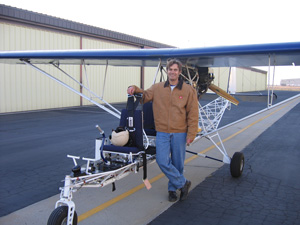
The wingstruts are modified Piper Super Cub, and the wings themselves are built up from a WagAero 2+2 kit, essentially a J-3 Cub only with aluminum spars instead of wood and fiberglass tips instead of tip bows.
There are virtually no 90 turns in the control-cable routings because of the way they’re rigged, again to keep the controls low in friction and light in feel. Hlavac installed the largest diameter ball bearing pulleys he could find and worked around them. Consequently, he used 5⁄32 inch cable instead of 1⁄8 inch, which resulted in a negligible weight penalty, he says. The rudder cables were also relocated to below the floorboards for a cleaner installation.
The seats were modified because the straight-up side tube was uncomfortable to sit in, Hlavac says. They were made wider, and love handles were added to provide something to hold onto in flight and when entering and exiting. They make a good place for people in the back seat to hang onto when they’re white-knuckling it, he said, laughing.
Although people sometimes assume the Breezy is an ultralight because of its naked structure, it is an Experimental/Amateur-Built category airplane. The plane is licensed VFR, though it has a transponder, strobes and position lights, and is thus equipped to land at Lindbergh Field in San Diego if Hlavac wanted to.
Using It
This Breezy weighs 994 pounds empty, and it grosses at 1850. (The KITPLANES Aircraft Directory lists the empty weight of the R.L.U.-1 as 698 pounds and the gross as 1200.) Each wing holds 18 gallons of fuel, but hes only flown it full during flight-testing. It burns 8 gallons per hour, Hlavac says, about the same as a Cessna 172. His typical throttle setting is 2350 rpm, and he uses the power of the bigger engine to push the draggy airframe around. (For the record, someone has built a biplane version of the Breezy, a super draggy proposition if ever there was one.) It stalls at 42 to 43 mph, and cruise speed is about 70 mph, though Hlavac says he probably could go 100 mph with the 150-hp engine.
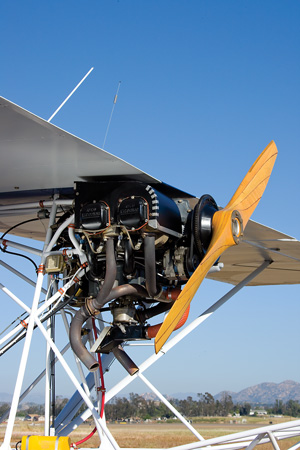
Hlavac often flies with his buddy Todd Bohlman, a Citabria pilot whos typically cruising alongside at 1900 rpm. Bohlman likes pairing up with Hlavac because he tends to burn less fuel during those flights. Bohlman made a unique contribution to the Breezy with his design of a cam mechanism that allows for remote triggering of the shutter release on Hlavac’s wing-mounted digital camera. The trick aspect is that the cam momentarily depresses the shutter release halfway to allow the camera to focus, and then the rest of the way to take the picture.
As you would expect, Hlavac’s flying is mostly local, lots of breakfast runs with friends. His most distant flight was a trip from San Diego to Flabob Airport, the longest straight-line run hes done and lasting about 2.5 hours round trip. Thats about as much as I can take in that seat, he said. As of June, he had accumulated about 146 hours in the Breezy. He’s also done his share of Christmas-time runs in full Santa regalia, and enjoys giving rides whenever anyone is interested.
Post-ride responses in the logbook he keeps have been varied. Some people get out and immediately kiss the ground, he said, grinning. Others are exhilarated. Some even draw pictures. Hlavac was thrilled when Bill Brooks, who was involved in developing the Pegasus aircraft, was among the most enthusiastic after flying in the Breezy.
Pre-Breezy History
Before he built the Breezy, Hlavac had about 400 hours in hang gliders. He came to San Diego from Minnesota specifically to learn how to hang glide, inspired by magazines hed read since high school. He recalled that his dad took him to see a hang-gliding competition in Minnesota, where they didn’t get to see anything fly, but the hook was set. With his fathers blessing to defer college for a while along with the gift of an Olds Delta 88 (and the admonition If it breaks down, junk it), Hlavac took off for the West Coast, landing in San Diegos Ocean Beach neighborhood, where he slept in his car the first night and got ticketed by the police. At least they didn’t wake me up to issue the ticket! he said.
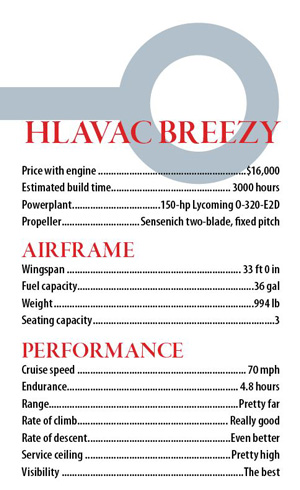
Eventually he found a roommate situation with a couple of guys and set about making his flying dreams manifest. He enrolled in the Industrial Technology program at San Diego State University, quitting school when the program was discontinued. (He later earned his Industrial Technology degree from Cal Poly San Luis Obispo). Also interested in scuba diving, he worked at a Sport Chalet retail store for a couple of years, but soon started his training at the Hang Gliding Center in Sorrento
Valley (in San Diego County, now defunct), run by John Ryan. After learning the ropes, he went on to own a Tandem Glider by Pacific Airwave (no longer in production), a Wills Wing Falcon (still available) and a Moyes CX-5 Topless glider. He still owns both the Tandem Glider and the Wills Wing.
Hlavac’s first date with his wife, Christina, was a ride in the Tandem glider. He often took people up for introductory flights, and he would go over the instructions with each person first, asking them to confirm, when he asked if they were ready, by saying You betcha! He figured that if they could remember to say You betcha! they’d probably understood the rest of the instructions as well. Prior to departure, many would ask, Could we die doing this? to which hed reply, Yes, but I don’t want to die, so were probably OK. Christina had no qualms about that first flight. She trusted him, and he recognized a good thing when he saw it. They now have a 4-year-old daughter, Bella, and another child en route.
Along the way, Hlavac earned his A&P with IA endorsement in addition to his Private Pilot, Single-Engine Land and a Repairmans Certificate for the Breezy. With the A&P/IA, he does annual inspections and maintenance on friends certified aircraft, offering them a reduced rate if they prep the plane and help with the work.
Auspicious Beginnings…
Hlavac’s first flight in the Breezy was on December 31, 2005, from Ramona Airport (northeast of San Diego). Once he had finished his 40-hour fly-off over an unpopulated flight-test area, he went back to Gillespie to meet friends and give them rides. This just happened to coincide with the EAAs nationwide tour of the B-17, which was scheduled to appear at Gillespie that same day. Approaching the airport, Hlavac reported his location, and the tower was perplexed about what a Breezy was (as they often are, he said). Along comes the B-17, telling the tower it has what looks like Nanook of the North flying next to us. (It was chilly that day, and Hlavac was wearing a snowmobile suit). The two pilots exchanged friendly waves. Because they were both at the airport to give rides that day, they would each load up at their respective staging areas and do the flights, and they got to know each other a bit. Hlavac called the B-17 his delivery escort.
The Breezy’s N number is 5150, police code for mental case, Hlavac said. It honors all of my fans who stopped by during the build and said, You must be nuts to spend that much time and effort on a plane with no fuselage that is going to fly so slow. Yeah, crazy like a fox. In building the Breezy, Hlavac has worked diligently to construct the perfect combination of form and function that suits exactly the type of flying he loves to do. The Breezy allows him a sort of Hans & Franz version of the piloting he had done earlier in his flying career, with the same open-air feeling and a nearly clear view in every direction, but more pumped up. If thats mental, so be it. He’s having a blast!
Plans for the Breezy are available from Carl Unger. For more information, call 708/636-5774. Materials kits are available from Aircraft Spruce.

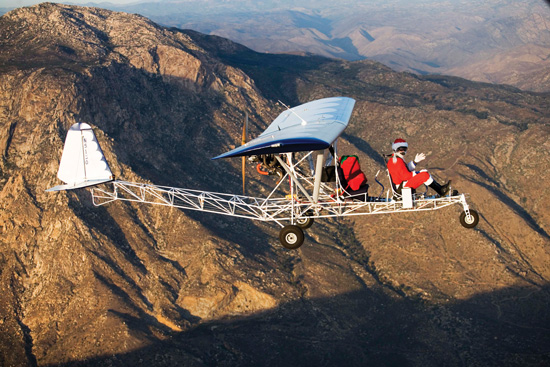
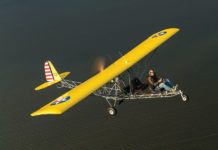
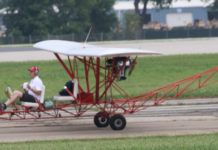


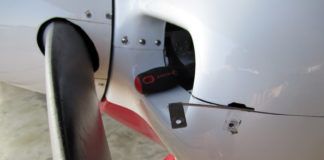
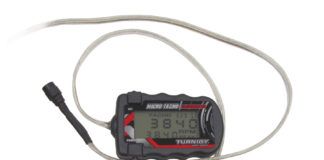
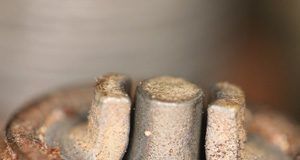
Is it possible to buy Breezy plans?
Yes, see the Kitplanes Buyer’s Guide:
https://www.kitplanes.com/buyers-guide/breezy-r-l-u-1/